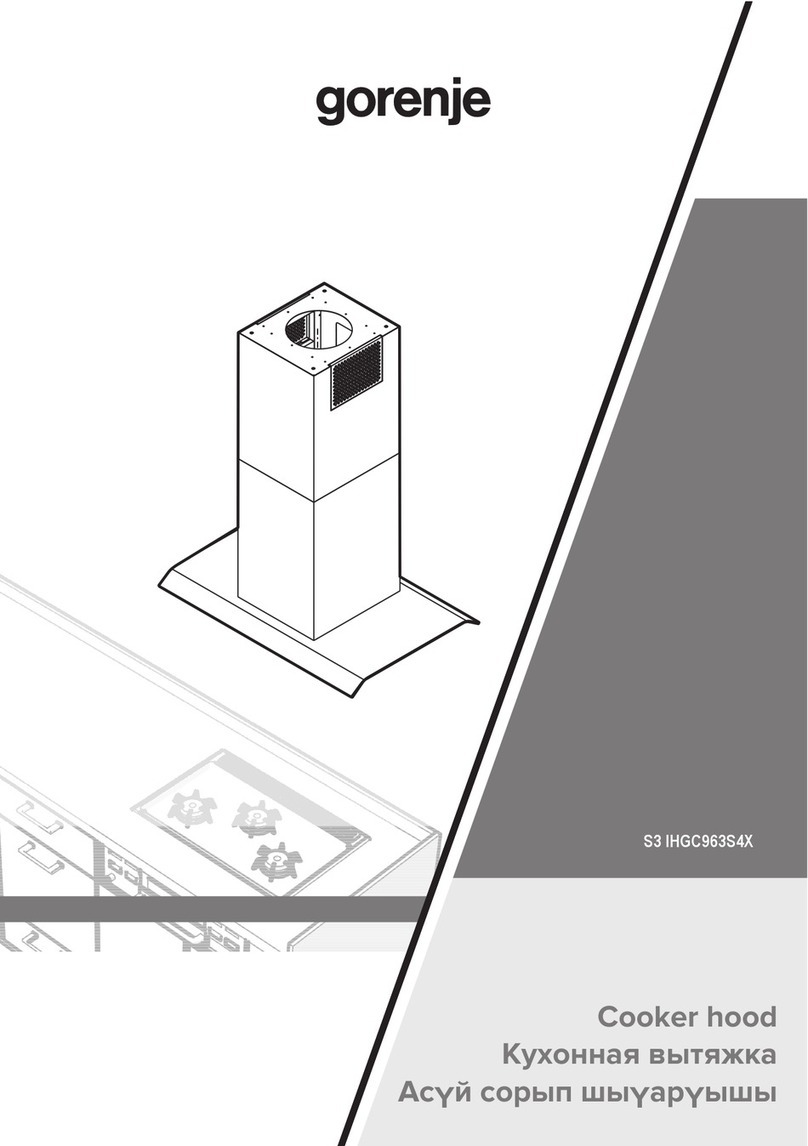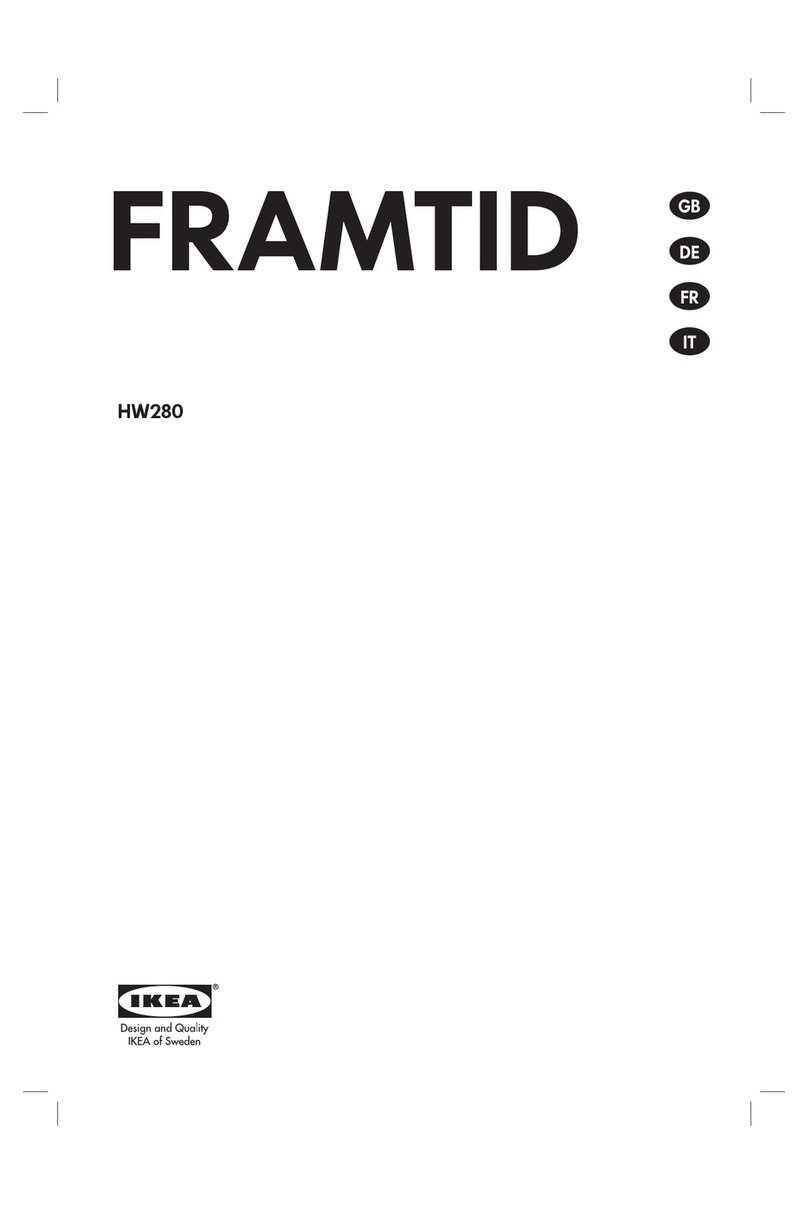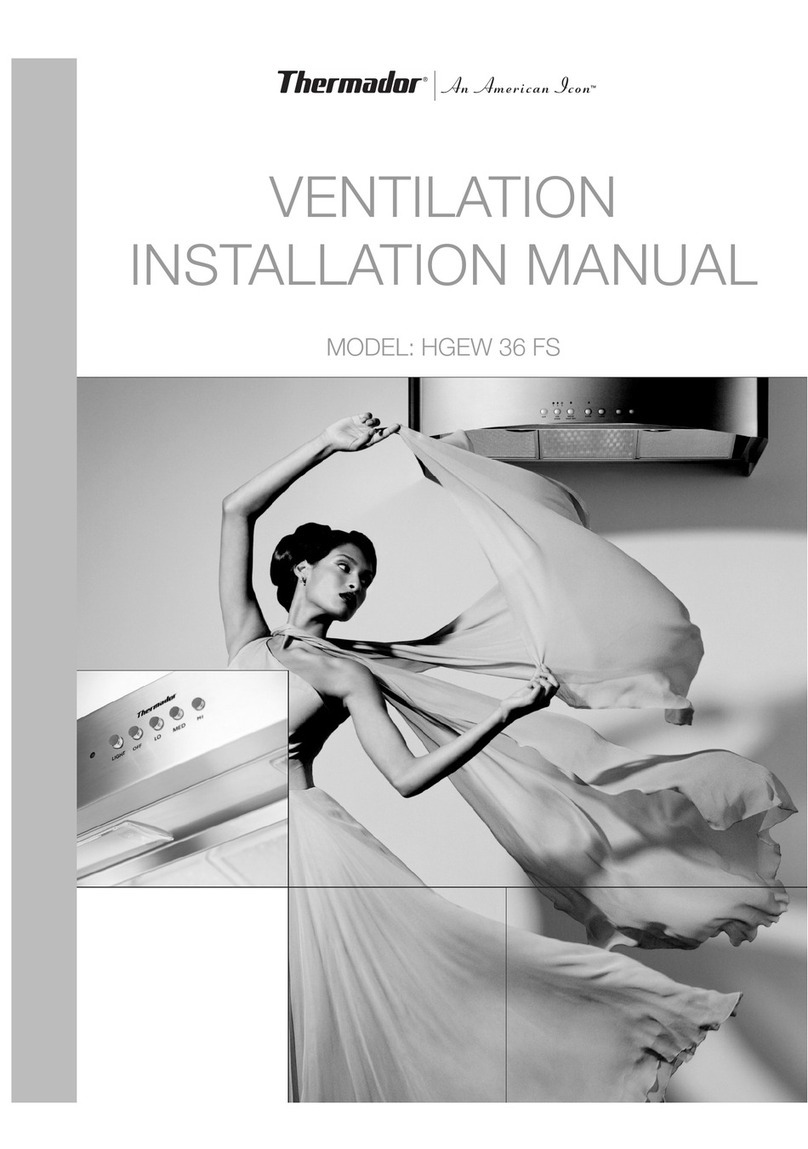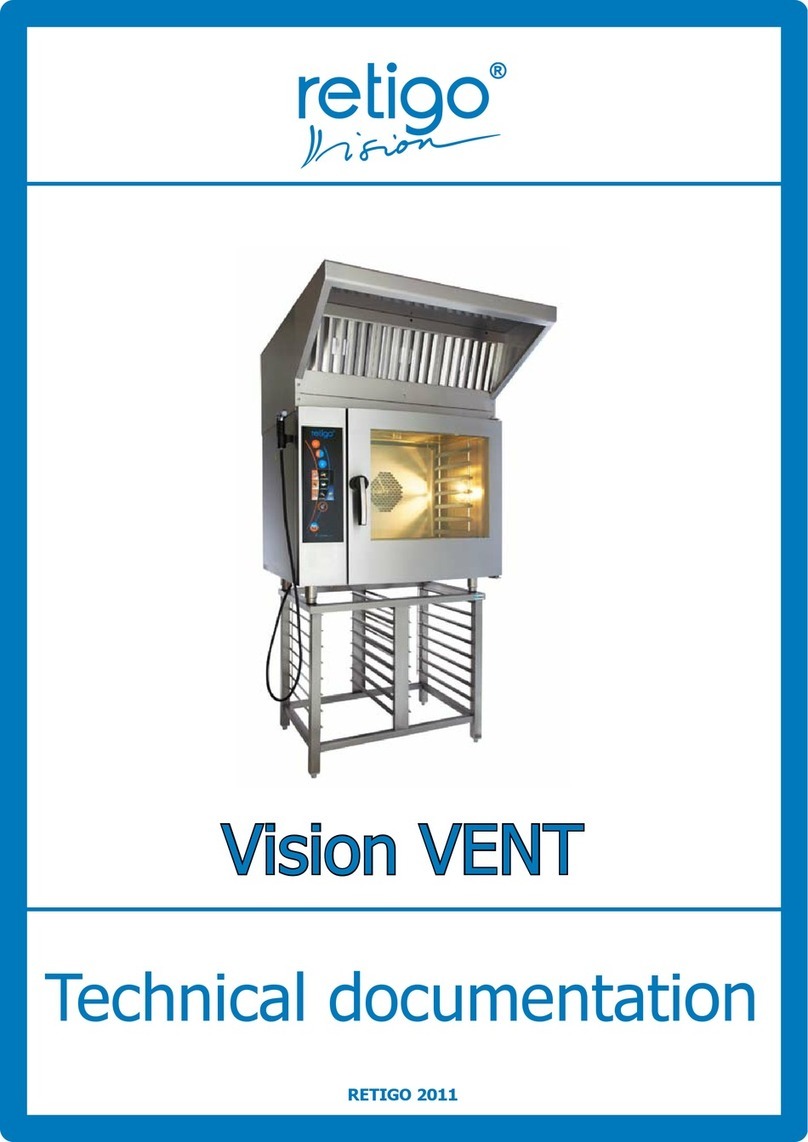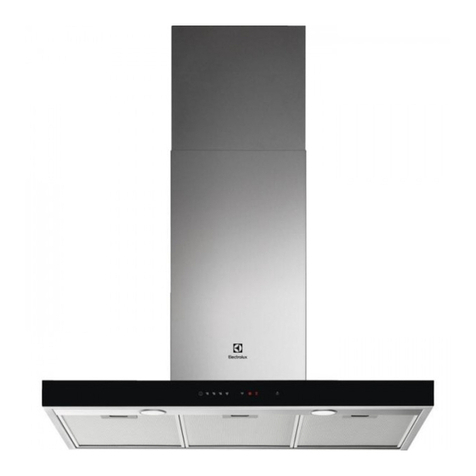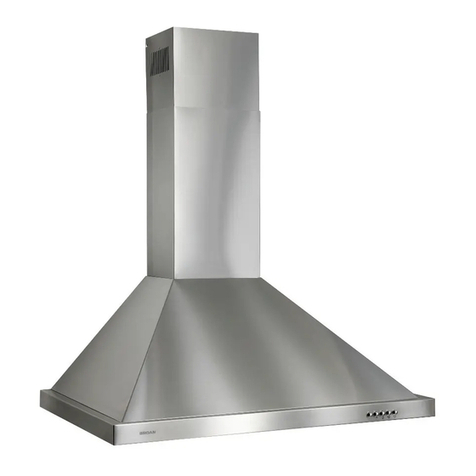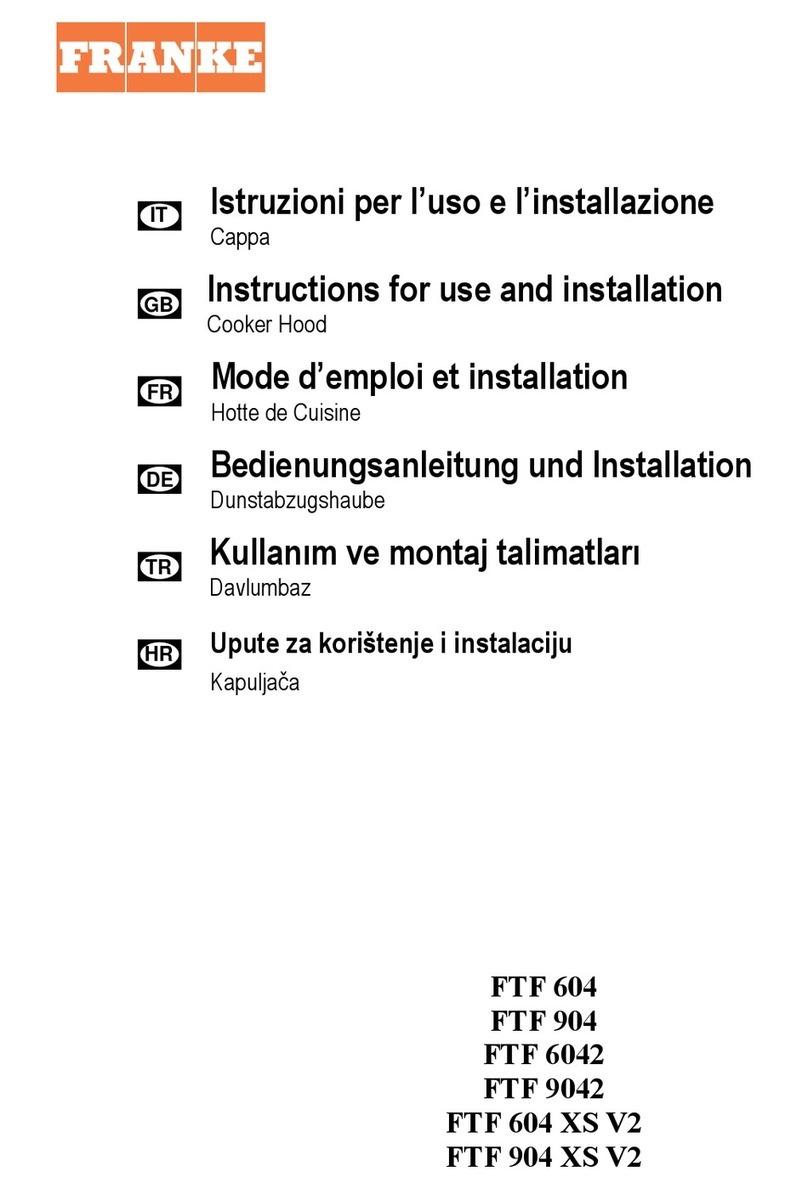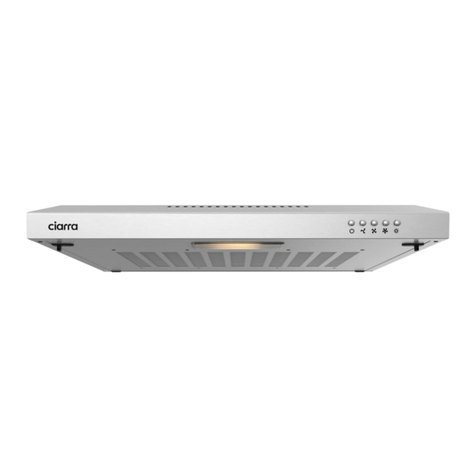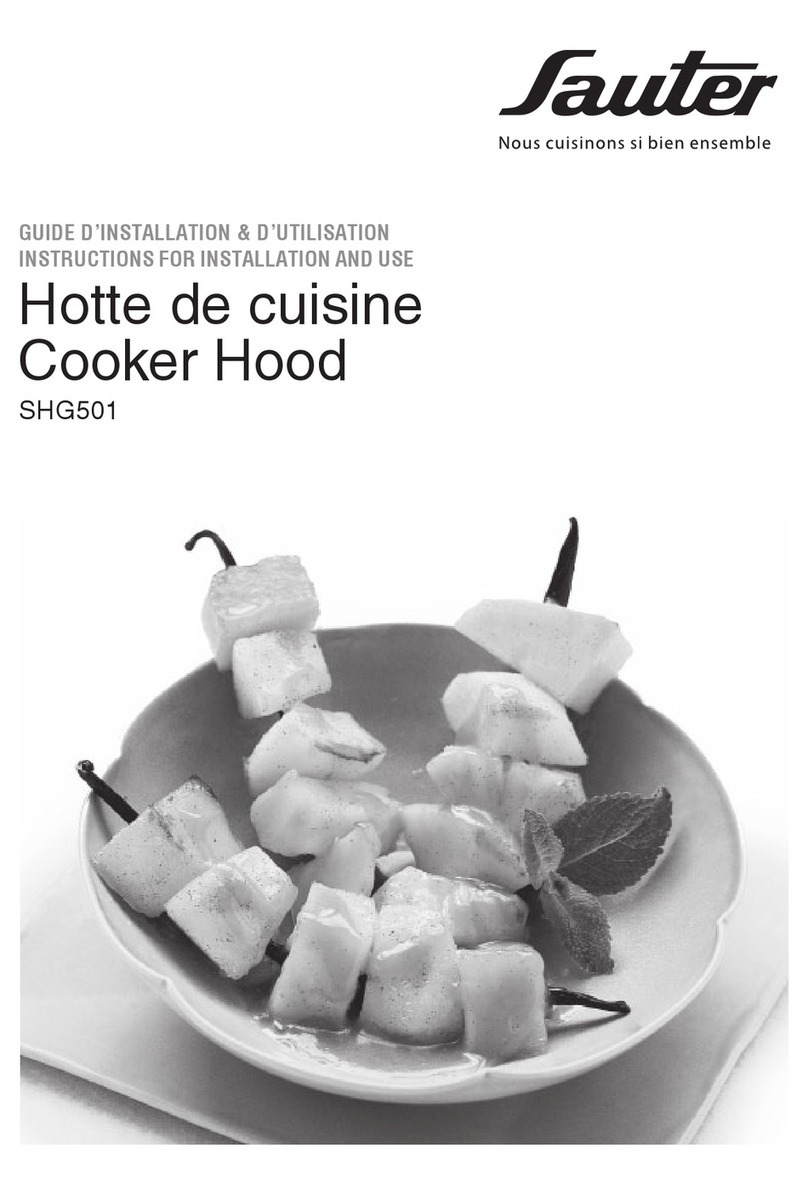6
2. USING AND OPERATING THE HOOD
Retigo hoods are intended for the extraction and condensation
of waste steam from RETIGO appliances and are designed for the
Vision range of models, in production since May 2017. They are
controlled electronically from the relevant appliance. The hoods
are intended only for RETIGO electric appliances and cannot be
installed on gas appliances.
After the door of the appliance is closed and cooking begins,
the temperature inside the cooking chamber of the appliance
is monitored. If the temperature exceeds the level at which the
hood is activated, extraction starts at aslow rate. If the door of the
appliance is opened during cooking or after cooking is completed,
the hood temporarily switches to afaster rate in order to extract any
steam more eectively. After the door is closed, the hood reverts to
aslow rate. Extraction stops when the temperature of the cooking
chamber dips below the activation level or if the appliance door is
left open for some time.
The manufacturer has issued an EC declaration for the hood
3. UNINTENDED USE
Any other possible uses shall be regarded as unintended use.
RETIGO s.r.o. shall not be liable for the resulting damage. In such
cases the risk shall be borne by the user!
4. IMPORTANT INFORMATION
• This appliance is not intended for use by people (including
children) with physical or mental disabilities or who lack the
experience or knowledge to use the appliance safely, unless they
are supervised or instructed to use the appliance by a person
responsible for their safety. Make sure that children do not handle
the appliance.
• Careful study of the operating manual will provide you with
important information on the design, control and safe operation
of the appliance.
• After unpacking the appliance, make sure that the delivery is
complete.
CONTENTS OF HOOD DELIVERY PACKAGE:
Type 0610: hood, 3 grease filters, sheet metal cover (for installing
the hood onto an appliance with a left door), 0610 hood set,
technical documents
Type 2011: hood, 3 grease filters, sheet metal cover (for installing
the hood onto an appliance with a left door), UTP cable, UTP
splitter, 2011 hood set, technical documents
Type 623: hood, 3 grease filters, sheet metal cover (for installing the
hood onto an appliance with aleft door), 623 hood set, technical
documents
• Check to see if the appliance is the right type for the required use.
• Installation should be carried out only by a properly certified
professional.
• The appliance must be connected in accordance with the
applicable regulations and standards and the operating manual.
• Adjustment and first start-up should be done only by aservice
mechanic with a valid certificate from the manufacturer.
A list of our contracted service companies can be found at:
www.retigo.cz.
• Faulty connection may cause damage, for which the manufacturer
shall not be liable.
• Maintain and clean only according to the prescribed instructions.
• If the appliance malfunctions, contact your dealer or service
partner, or one of the service companies listed at: www.retigo.cz.
UNAUTHORIZED TAMPERING MAY DAMAGE THE DEVICE!
• For proper functioning, safety and long-term operation, we
recommend regular annual inspection and maintenance by
one of our contracted service companies. This will protect your
investment.
• When finishing work with the appliance, switch o the electricity.
• Use only original parts for repairs.
• The manufacturer accepts no responsibility for defects caused
by improper installation, or by failure to comply with regulations,
standards or the operating manual during installation or
operation, and the warranty does not apply to such defects.
• The appliance is intended only for professional use and must be
operated by trained, qualified personnel.
5. USING THE OPERATING MANUAL
Read the operating manual thoroughly. Follow the operating
manual during work, cleaning and maintenance. If you are not
sure how to perform a certain task, ask your salesperson or the
manufacturer.
5.1 SYMBOLS USED
The symbols used in this manual draw attention to activities that
may aect safety, health or the need for inspection, helping you to
avoid problems.
SYMBOLS USED IN THE DOCUMENTATION
In this documentation you will find symbols with the following
meaning:
SYMBOL MEANING
These symbols mean
"ATTENTION" and
"WARNING", they inform you
about things that may cause
serious injury to the user and/
or damage to the machine.
Furthermore, they indicate an
important instruction, feature,
method or issue that must be
followed or considered when
operating or maintaining the
appliance.
This symbol indicates useful
information related to the
appliance or its accessories.
This symbol is a reference
to another chapter in the
manual.
It indicates other procedure
options that you may, but do
not necessarily have to, apply.
6. KEY REGULATIONS
The generally applicable legislation and other binding rules for
accident prevention and environmental protection are not listed
individually, but must be followed as strictly as possible. Examples
of these regulations include:
• ČSN EN 60335-1 ed.2:03
+A11:04+A1:05+A12:06+A2:07+A13:09+A14:10+ A15:12
• ČSN EN 60335-2-99:04
Technical documentation I Vision Vent 2 Hood I Basic information
